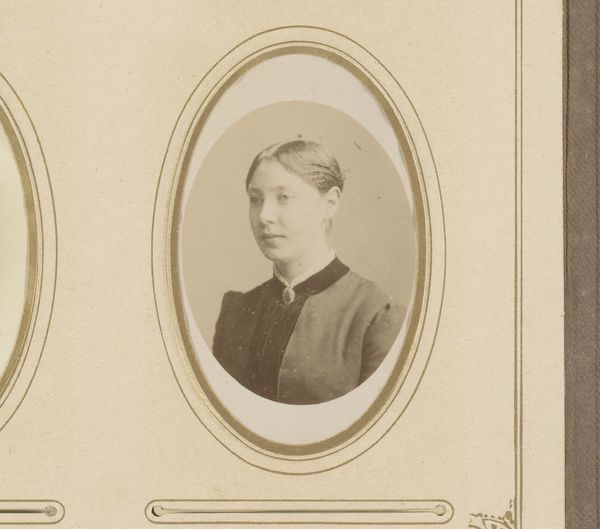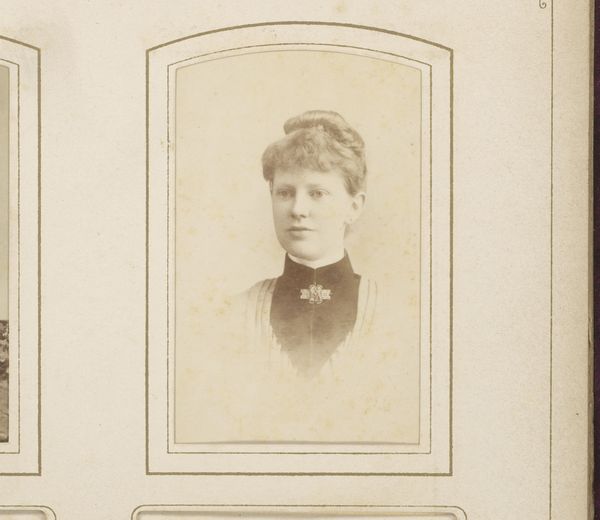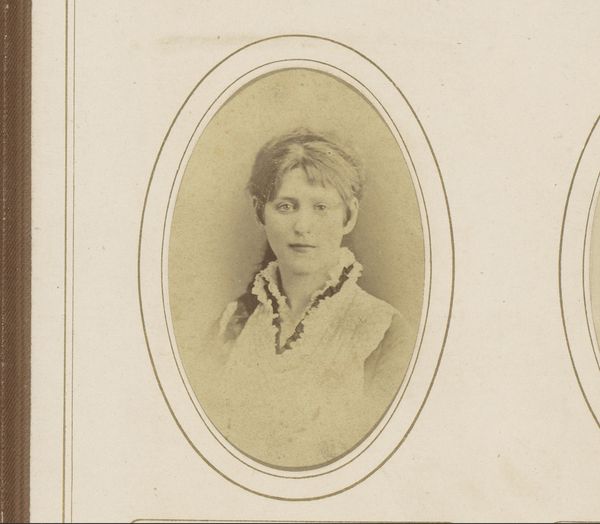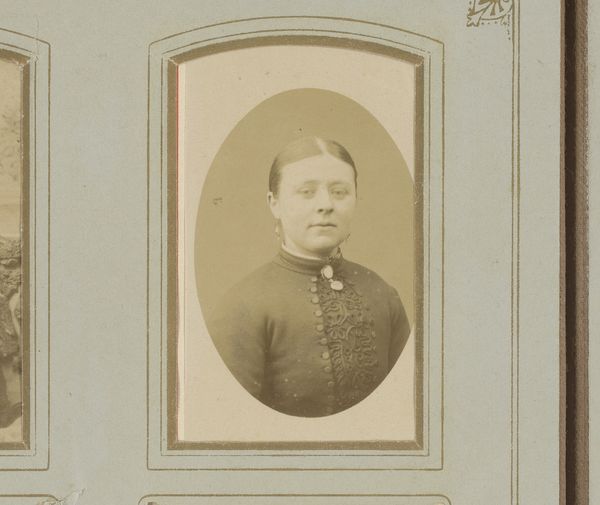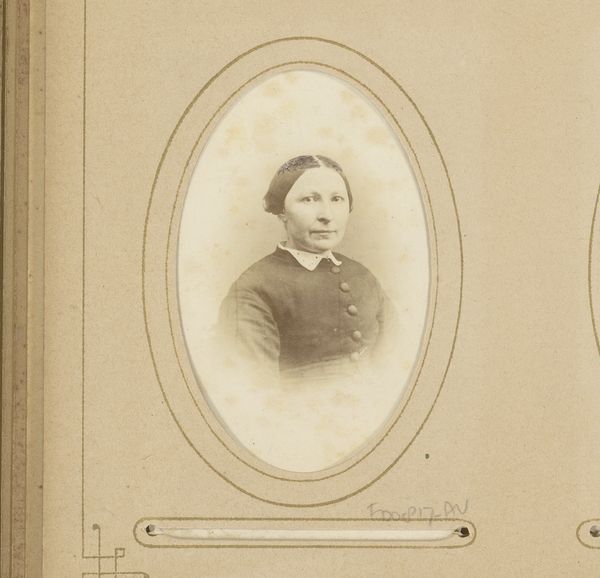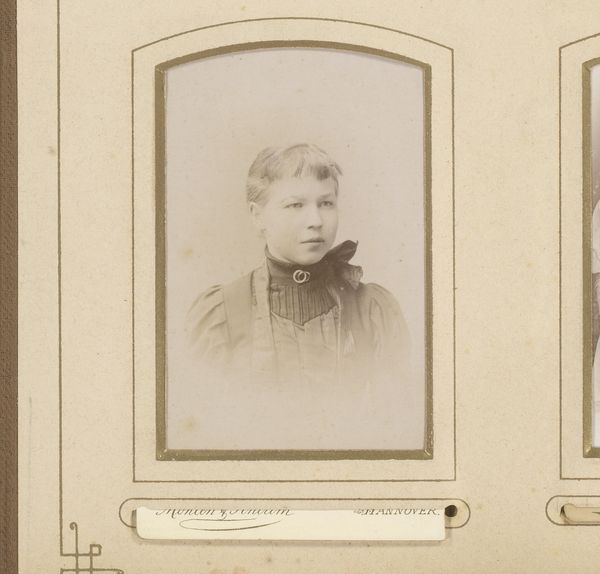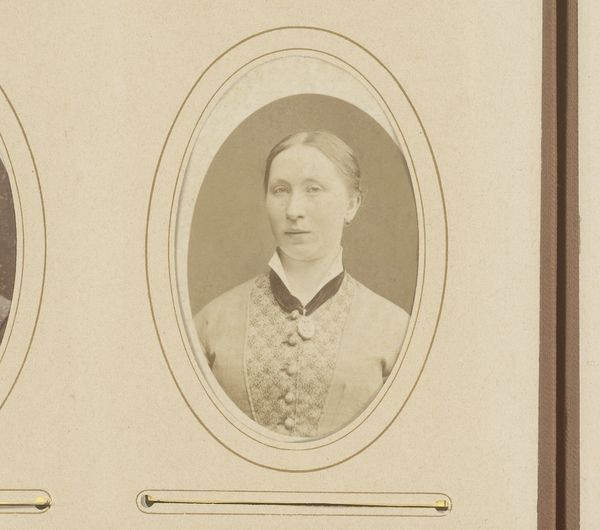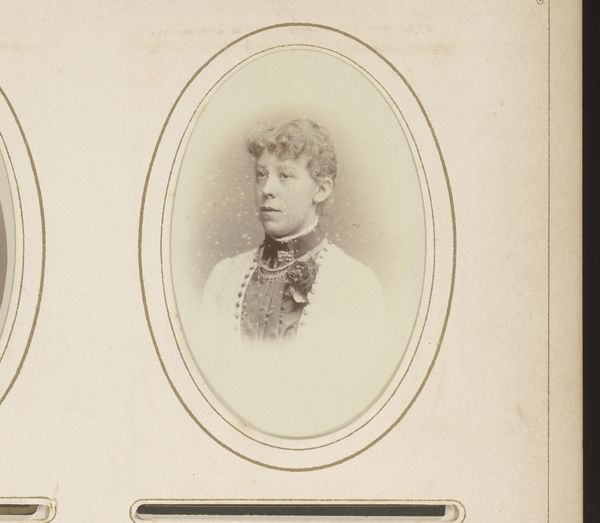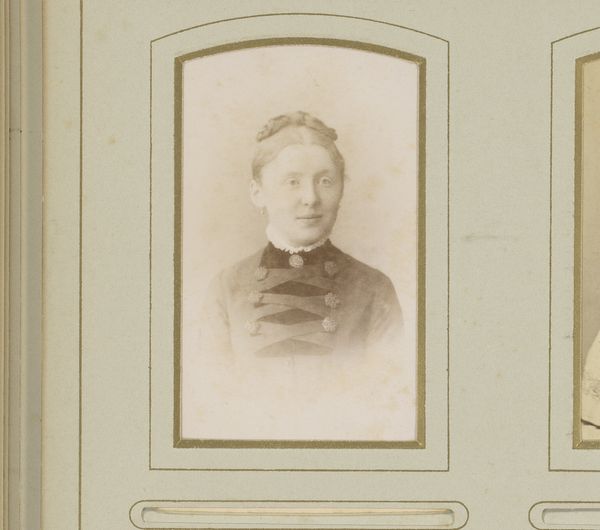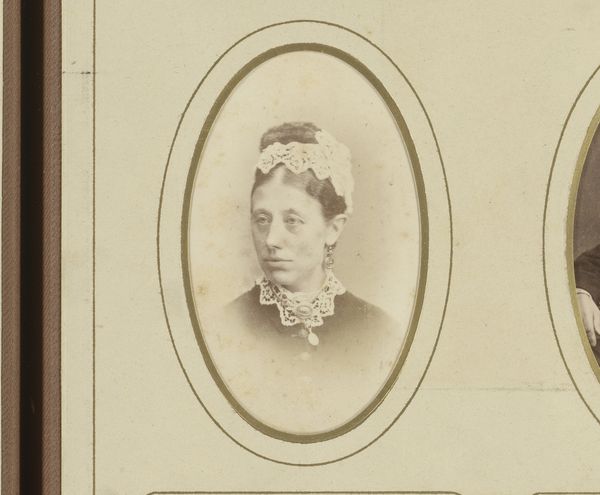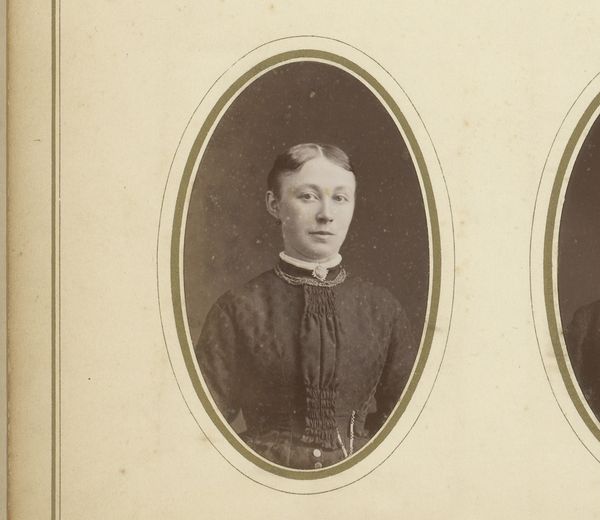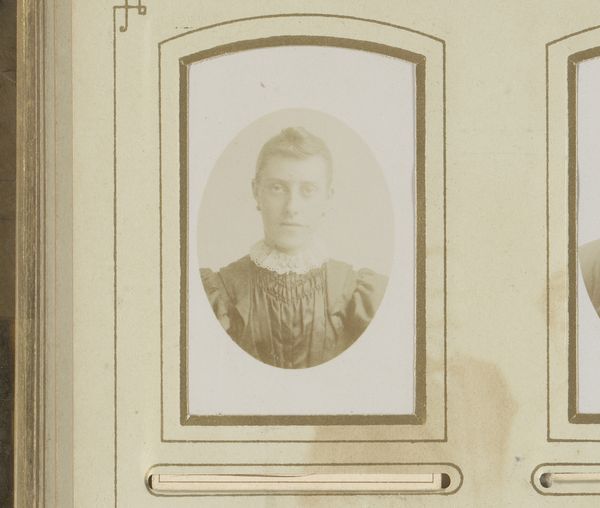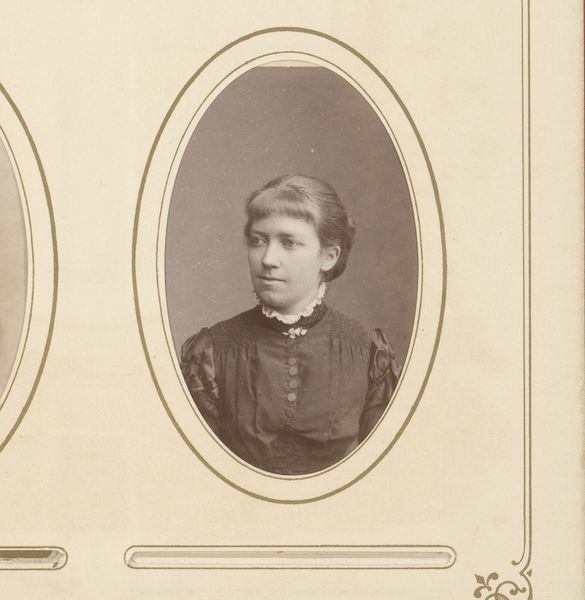
Portret van een vrouw met oorbellen en halsketting met medaillon 1870 - 1910
0:00
0:00
heinrichwilhelmwollrabe
Rijksmuseum
photography
#
portrait
#
photography
#
historical photography
#
19th century
#
academic-art
Dimensions: height 83 mm, width 52 mm
Copyright: Rijks Museum: Open Domain
Curator: There's a profound stillness about this photographic portrait. Editor: Indeed. The Rijksmuseum holds this piece by Heinrich Wilhelm Wollrabe, entitled "Portret van een vrouw met oorbellen en halsketting met medaillon," dating from 1870 to 1910. Curator: The woman's gaze holds such a weight of history; the period jewellery, particularly the medallion necklace, hints at a story, a connection to the past, possibly familial or sentimental significance. The delicate lace collar seems almost a shield against something unseen. Editor: I agree. It's also interesting to note how photography served to democratize portraiture in this era. Previously, only the wealthy could afford painted portraits. But the rise of photography made image production affordable for the middle class. We see here the markers of upward mobility. Curator: Absolutely. The way she’s adorned… earrings, the necklace. It speaks of status but also an identity crafted within the constraints of her time. The formal composition directs us to seek symbolism beyond a mere representation. We search her gaze, seeking clues of her social identity in the decorative details of her garment and jewelry. Editor: And the oval frame further confines her within established aesthetic conventions. We also cannot dismiss the way the art world elevated certain social values through the medium of photography, or promoted social values like modesty and austerity, with portraiture capturing an ideal for public consumption. Curator: And consider the medallion itself: it's a vessel, a reliquary holding something close to her, maybe a lock of hair, a miniature portrait... it functions as an emotional anchor. She is wearing it with quiet pride and it is a link between her and what matters most. Editor: Precisely, Wollrabe's technical skill certainly reflects the period’s academic approach. But also, that she, through this photographic artifact, participates in the visual economy. It creates a space in collective cultural memory. Curator: It's fascinating how this single image, seemingly simple, holds layers of cultural narrative and personal history within its sepia tones. Editor: A potent reminder that every portrait, whether painted or photographic, is not only an artwork but a historical document of both personal and social aspirations.
Comments
No comments
Be the first to comment and join the conversation on the ultimate creative platform.
